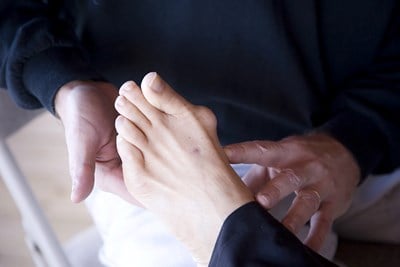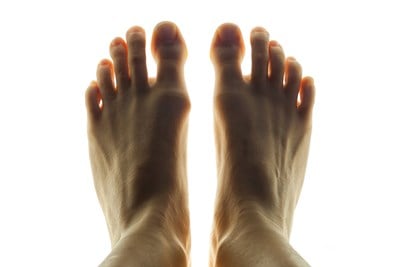Bunions are bone growths on the inside edge of the foot at the joint of the big toe. They develop when the big toe leans in towards the others, slowly pointing inward instead of straight ahead. The angle of the toe gradually changes, creating protrusion of the bone, inflammation, pain, and sometimes calloused skin. Because bunions appear slowly, if you notice it soon enough you can take precautions to slow or reduce the severity. Here are a few bunion symptoms to watch out for.
Bony Bump
The further a bunion progresses, the more visible it becomes. At first, you may not even notice what’s happening. The bump of bone that forms on the tip of the metatarsal (long bone) that the big toe bones (phalanx) connect to. As the big toe pushes towards the smaller toes the long bone begins to extend the other direction, forming what appears as a protrusion. You may be able to see the progression of this bony mass. If you’ve noticed your toe turning inward, or a bump that is not just calloused skin forming, you may need to see a doctor.
Skin Changes
Calloused skin that forms on your feet doesn’t always mean that you have a bunion—but it’s something that you should be mindful of. It’s important to know the difference if you have risk factors for developing bunions. A callous may also develop where the big toe presses against the second toe, near the top, as they rub abnormally together. You may also notice the skin becoming more red, and skin near the big toe joint may seem thicker.
Soreness
Pain is another key indicator that a bunion isn’t only developing, but also becoming a serious problem. As the bunion grows, the joint of the big toe becomes inflamed. This causes swelling and soreness in the area; the pain can either be constant, or only occur during periods of high activity or pressure on the foot. It may eventually become more difficult to move the big toe. Although there are at-home remedies for bunions, it’s still a good idea to have a doctor take a look—particularly if your bunion is causing persistent pain.



